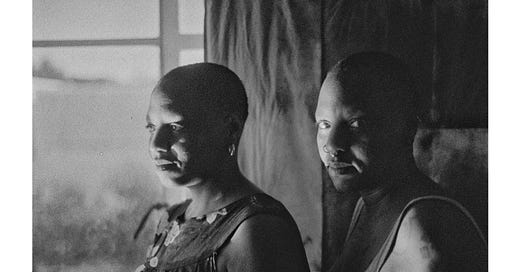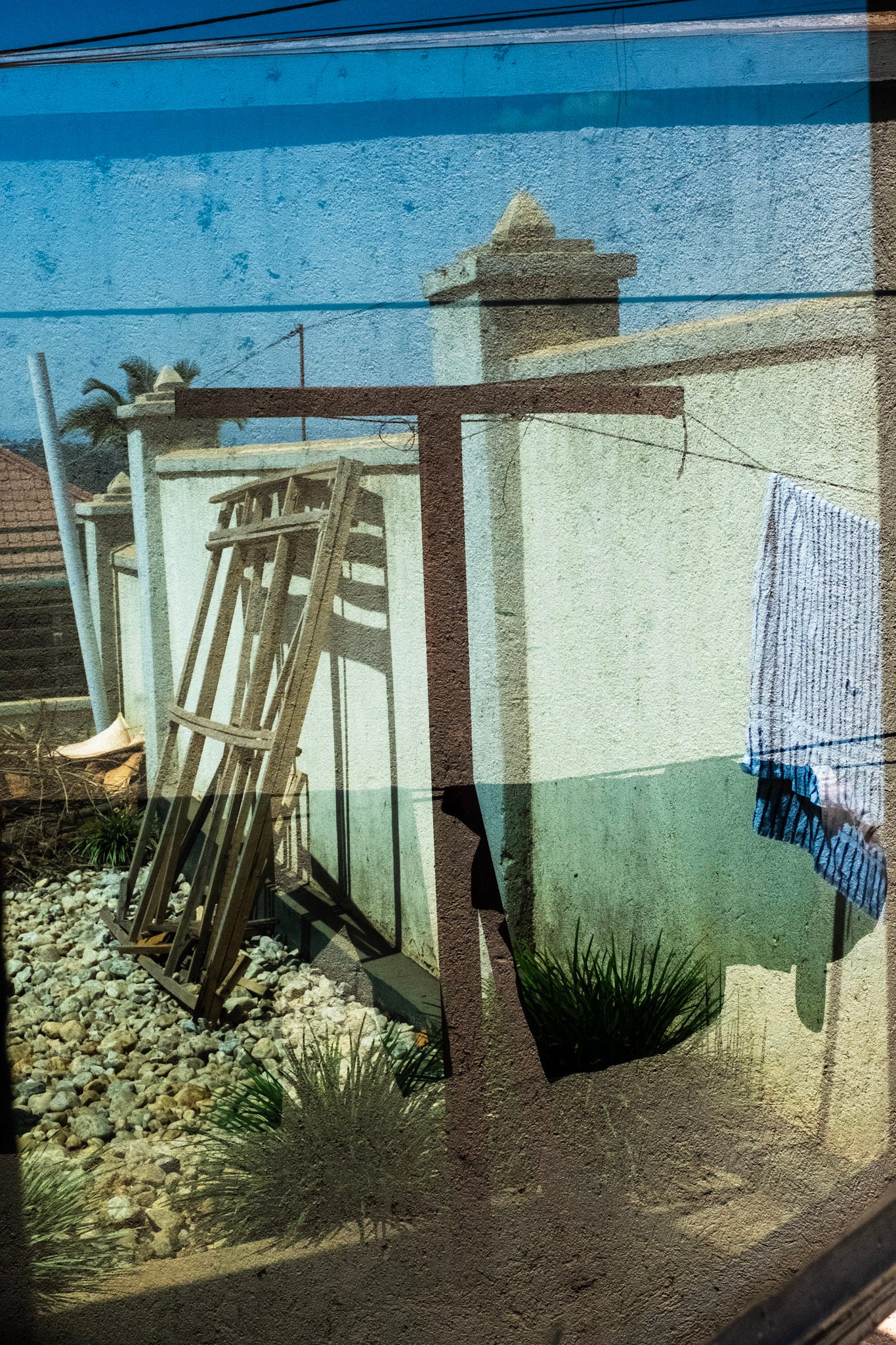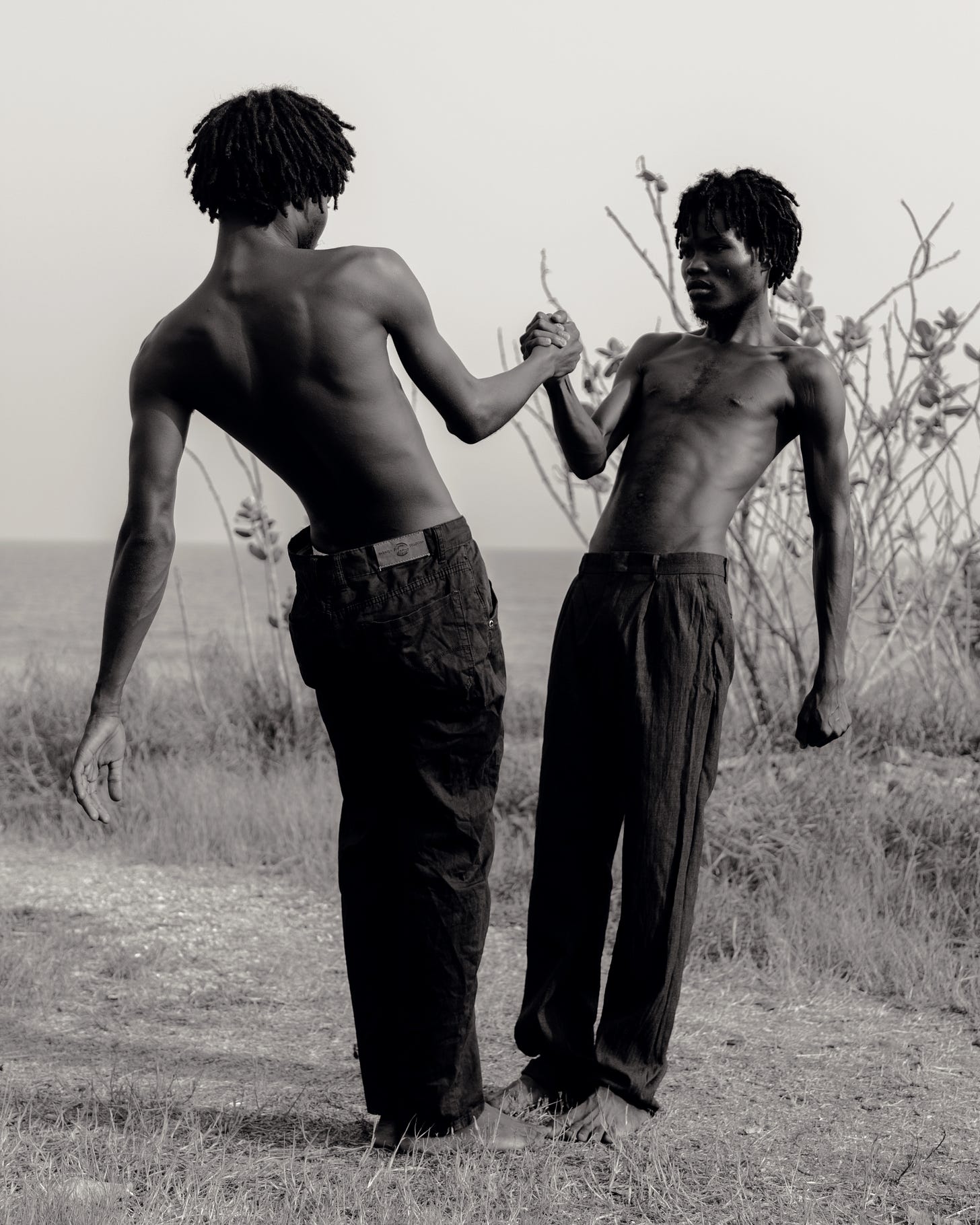A photograph of two women who look alike. To account for the similarities in their features—the folds on their faces, for instance—is to be invested in a rather finicky process of looking. Instead, consider how it might seem for two people who could quite easily swap identities to see a photograph of themselves together—as though to watch yourself as you watch yourself being watched. A quadrupling of gazes. Yet the photographer—as these women surely intended—also shows a difference in the face of the woman who turns towards us. Not so much to note how she differs from her twin, but to catch her gaze as it looks back, watching you as you watch her.
— Emmanuel Iduma
“I approach photography as storytelling.”
This photograph was taken at the studio of the twins in Hye Park, Johannesburg.
As a recent image I created, it showcases my progress as a photographer and how I choose to photograph. The image was not intentional; I had an appointment with Nonzuzo where she made photographs of me for a project, but since I also had a camera and loved the light and the setting of their space, I took photographs. I usually do not think about my images when made, they only start making sense later, during the editing stage.
I approach photography as storytelling. Whether we are mindful of it or not, it is a great tool to use to communicate whatever we feel.
— Tshepo Moloi
About Tshepo Moloi
Tshepo Moloi was born in Johannesburg but grew up in the rural Daggakraal, Mpumalanga. In 2015, he became interested in photography and film-making, and began experimenting around his community. His work was published on Africanah.org The Kiosk of Democracy, and Mail & Guardian. Find more about his work on Lens Scratch and Mail & Guardian.
LAST WEEK — “Home Dream” by Alain Jules Hirwa
One morning, as I tried to pull the window close, I noticed that the towel and shirts on the clothesline looked euphoric. I grabbed my camera that rested on books on the floor in the corner of the living room and took multiple photographs of the image.
RELATED — “Brother’s Keeper,” by David Nana Opoku Ansah
There is a Ghanaian proverb about unity which states, Praye, se woyi baako a na ebu: wokabomu a emmu (Twi spelling: prayɛ, sɛ woyi baako a na ebu; wokabomu a emmu), which when literally translated means: when you remove one broomstick it breaks, but when you put them together they do not break. The saying simply means that power and growth is slow or non-existent if you do things individually, but if you work as a community, you move faster and grow significantly.
Read more, from the 115th edition.
This is the 132nd edition of this publication. The newsletter also read on web (best for viewing images), and via the Substack iOS/Android apps.
TENDER PHOTO is a collaborative digital archive and publishing platform of contemporary African photography, edited by Emmanuel Iduma. Our aim is to use photography to engage with life on the African continent. We publish narratives about the people, places, and events pictured in photographs, contributing to nuanced and layered perceptions.
Every Wednesday we feature a photograph, a short caption about it, and a statement from the photographer. Last year, we published commentaries or photo-essays in response to photographs previously featured on the newsletter, including CORRESPONDENCES, CONCORDANCE, KINDRED, INDEX, and AFFINITIES. Our recent Friday series was dedicated to the 5 photographers featured in Process Projected, Amsterdam. See last week’s feature on the work of Aina Zo Rabarento here.
Thank you for reading. If this newsletter was shared with you, consider subscribing, or forward to a friend. Please whitelist the newsletter to ensure you never miss it.





